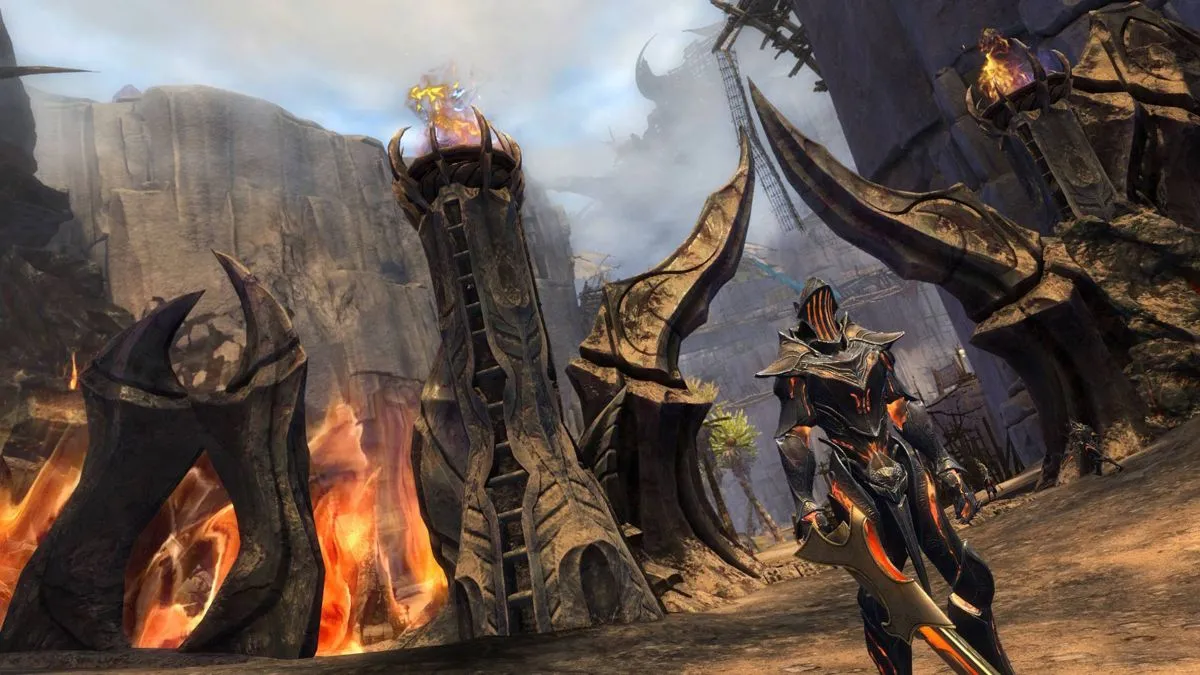Digging into the intricacies of “Guild Wars 1” is akin to unearthing a time capsule from an era when MMORPGs (Massive Multiplayer Online Role-Playing Games) were rewriting the playbook on online gaming communities and competitive teamwork. Released by ArenaNet in 2005, this game set a unique stage that diverged significantly from the monthly subscription model, offering instead a rich, expansive world fueled by tale depth, strategic gameplay, and a community-focused competitive experience that still resonates with its dedicated player base today.
Understanding Factions
”Factions,” the game’s second chapter, launched in 2006, wasn’t just an expansion but a revolution for “Guild Wars.” It introduced the concept of allegiance to one of two warring factions: the Luxons, nomadic warriors of the sea, and the Kurzicks, stoic defenders of the forest. This choice wasn’t purely cosmetic or saga-driven; it fundamentally altered your experiences, the alliances you could form, and the battlegrounds on which you’d wage war.
Choosing a side in this conflict isn’t merely about exquisite or lore preference; it’s about aligning yourself with a community within the game’s ecosystem. Your allegiance affects which missions you’ll undertake, the territories you’ll vie to control, and the players you’ll fight alongside in Alliance Battles. The complexity of this decision cannot be overstated, as it has long-term implications on your gameplay, influencing everything from the PvP (Player vs. Player) confronts you’ll face to the cooperative missions you’ll undertake.
Alliance Battles
Alliance Battles represent the pulsing heart of the conflict between the Luxons and the Kurzicks. Engaging in these 12v12 encounters is not for the faint of heart but offers a thrilling opportunity to contribute to your faction’s dominance over the contested lands. These battles are a test of plan, skill, and synergy, requiring teams to capture control points scattered across the battlefield while simultaneously fending off the opposing faction’s forces.
Success in Alliance Battles demands more than individual prowess; it’s about how well you can integrate your abilities with those of your team. Understanding the terrain, anticipating enemy moves, and executing concerted strategies are the keys to securing victory. The stakes are high, as outcomes here directly influence the control of territories, which, in turn, affects the resources and bonuses available to your faction.
The Jade Quarry
The Jade Quarry is a unique competitive mission that pits two teams of eight against each other in a high-stakes race to collect valuable Jade for their faction. This mission requires a keen understanding of offensive and defensive strategies, as players must chart a treacherous map filled with both enemy combatants and powerful NPC (Non-Player Character) guards to secure the precious resources.
Coordination and communication are paramount in the Jade Quarry. Teams must balance their efforts between assaulting the enemy’s collectors, defending their own, and strategically escorting their own carriers to the extraction points. Success here not only requires adept combat skills but also strategic thinking and the ability to adapt to the unfolding chaos of the battlefield.
Fort Aspenwood
Fort Aspenwood offers a different twist on the faction conflict, presenting a scenario where the Kurzicks defend a sacred fort while the Luxons launch an all-out assault to breach its walls. This competitive mission encapsulates the essence of siege warfare and demands a cavernous understanding of both defense and attack strategies.
The defenders must efficiently manage their resources and utilize the fort’s defenses, such as gates and siege weapons, to repel the invaders. Meanwhile, the attackers need to coordinate their assault, breaching defenses and overcoming NPC guards to penetrate the heart of the fort. Fort Aspenwood is a dynamic battlefield where the tide of battle can turn in an instant, requiring both sides to remain vigilant, adaptive, and above all, coordinated.
Competitive Missions
The allure of competitive missions in “Guild Wars 1” lies not just in the thrill of battle but in the elaborate dance of plan, teamwork, and adaptation. Each mission offers its unique set of challenges and requires a tailored approach to emerge victorious.
Success in these arenas extends beyond the confines of the battlefield. It builds camaraderies, forges alliances, and cultivates a level of strategic thinking that can only be achieved through the heat of competition. The rewards are substantial, from enhanced faction standing to access to exclusive areas and items, but the true prize lies in the glory of triumph and the bonds forged in the crucible of battle.
Threading the complexities of these missions and mastering the art of war in “Guild Wars 1” requires dedication, approach, and a willingness to engage deeply with the game’s rich assortment of mechanics, lore, and community. Whether you’re rallying your guild for a massive Alliance Battle, strategizing your next move in the Jade Quarry, or defending the honor of your faction in Fort Aspenwood, you’re participating in a legacy of competitive gaming that continues to enchant and challenge players to this day.
Conclusion
The competitive landscape of “Guild Wars 1” offers a significant lesson in the art of war, one that transcends the boundaries of the game. It teaches players about tactic, teamwork, and adaptability, but above all, it highlights the importance of community and shared objectives.
In this digital realm, wars are waged not just for territory or resources, but for the spirit of competition and the camaraderie born from facing challenges together. As players chart the intricacies of Factions, engage in Alliance Battles, and strive for victory in missions like The Jade Quarry and Fort Aspenwood, they are contributing to a legacy that has shaped the online gaming community.
”Guild Wars 1” remains a testament to the enduring appeal of well-crafted competitive play, a beacon for those who value plan, skill, and the bonds formed in the heat of battle. Through understanding its mechanisms, embracing its challenges, and fostering alliances, players can achieve not just victory, but a deeper appreciation for the art of war in the digital age.

